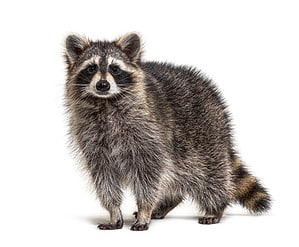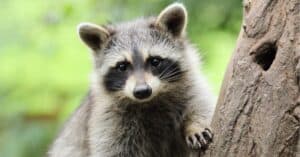
Red pandas are possibly one of the cutest species on the planet. They are solitary, docile creatures, preferring to live alone in treetops and sleep for the majority of the day. Their patterns of red, white, and black make them stand out among other bears and small mammal species. They seem to be unlike any other animal, except for one: the raccoon.
It is common for people to think red pandas and raccoons are related in some way. On the surface, they could be considered close cousins or siblings. In this article, we highlight similar characteristics and why they are closely associated with one another.
Basics on Red Pandas
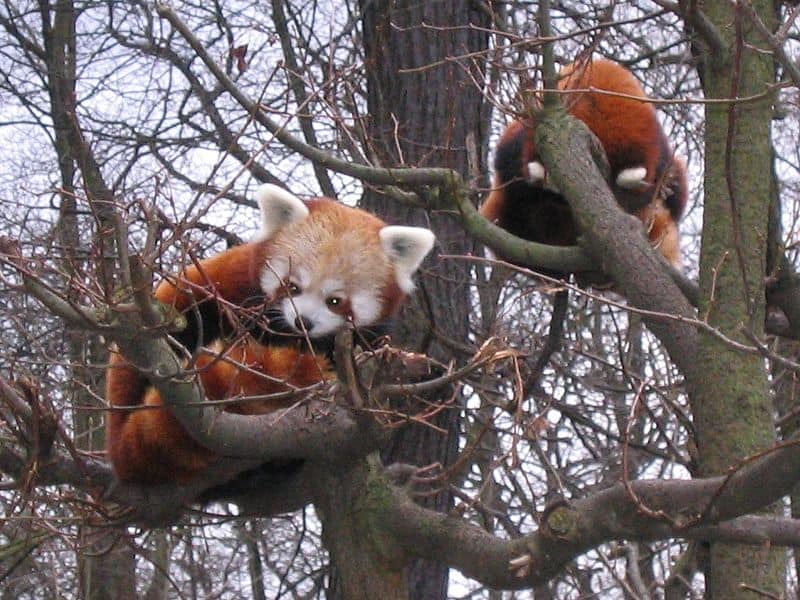
Red
panda
live high in trees where they are free from the reach of predators and poachers.
The red panda (Ailurus fulgen) is a small to medium-sized mammal that lives in the treetops of the Himalayan forests and mountains. In Nepal, the name “panda” derives from the word ponya which means “bamboo eater” or “bamboo footed.” Red panda paws help them grab bamboo stalks and hold them tight while eating. Their diet primarily consists of bamboo, but they will also eat berries, eggs, and occasionally insects and small lizards.
On average, red pandas live eight to 12 years. Despite having a name similar to the giant panda, they share very few genetic similarities (aside from requiring a diet of bamboo).
Red pandas prefer to live alone while sleeping for the majority of the day. They are remarkably similar to cats, napping all day and waking up only to eat.
Unfortunately, red pandas are classified as endangered because of habitat loss and overhunting for their colorful hides. Wildlife conservation efforts are implementing new laws and supporting breeding programs to help save the species, but there are less than 3,000 remaining in the wild.
Basics on Raccoons
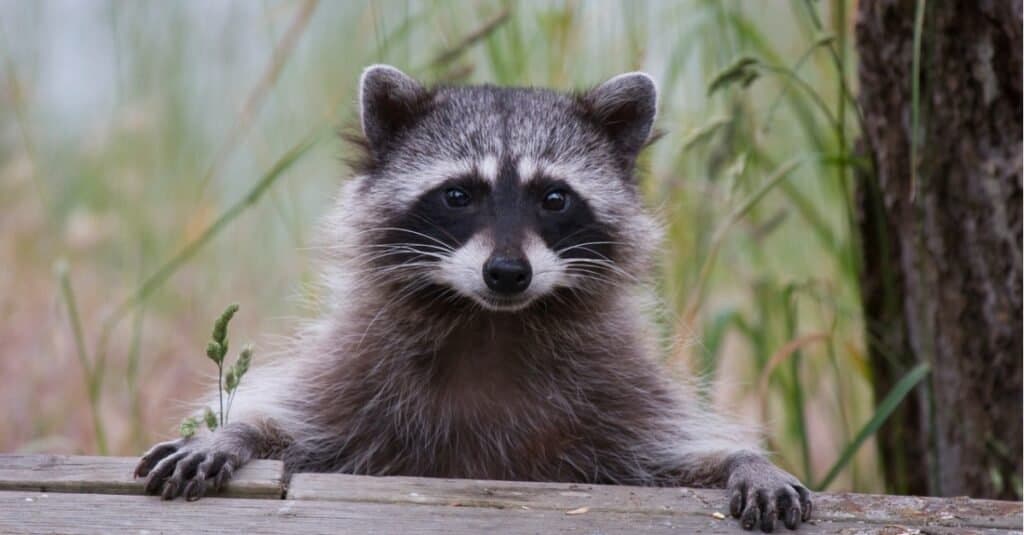
Raccoons are small mammals that are well-known for their burglary like masks and trash rummaging.
©iStock.com/cullenphotos
Raccoons (Procyon lotor) are a nocturnal species and one of the most common mammals in North America. They are solitary creatures, but siblings are known to work together to find food and shelter. They live in woodland areas, close to sources of freshwater. Raccoons feed on fish, nuts, berries, and scraps of food thrown out in garbage cans. With a proper diet, they can live between 12 to 16 years.
The online world has nicknamed these critters “trash pandas” due to their frequent foraging in trash cans and black and white markings similar to those of pandas.
They have a conservation status of least concern and greatly help the environment. These critters protect bees by eating wasps. Raccoons also dig in the dirt for food, upturning the topsoil to promote plant regrowth. Without their rummaging and intrusive habits, more wasps would prey on bees and lash out against the increasing human population.
How Are Red Pandas and Raccoons Related
Essentially, these animals are not related. While they may look very similar, they share extraordinarily little genetic material.
However, that does not stop people from mistakenly identifying these creatures from time to time. While they may not be directly related to one another, they do share some commonalities.
Scientific Confusion
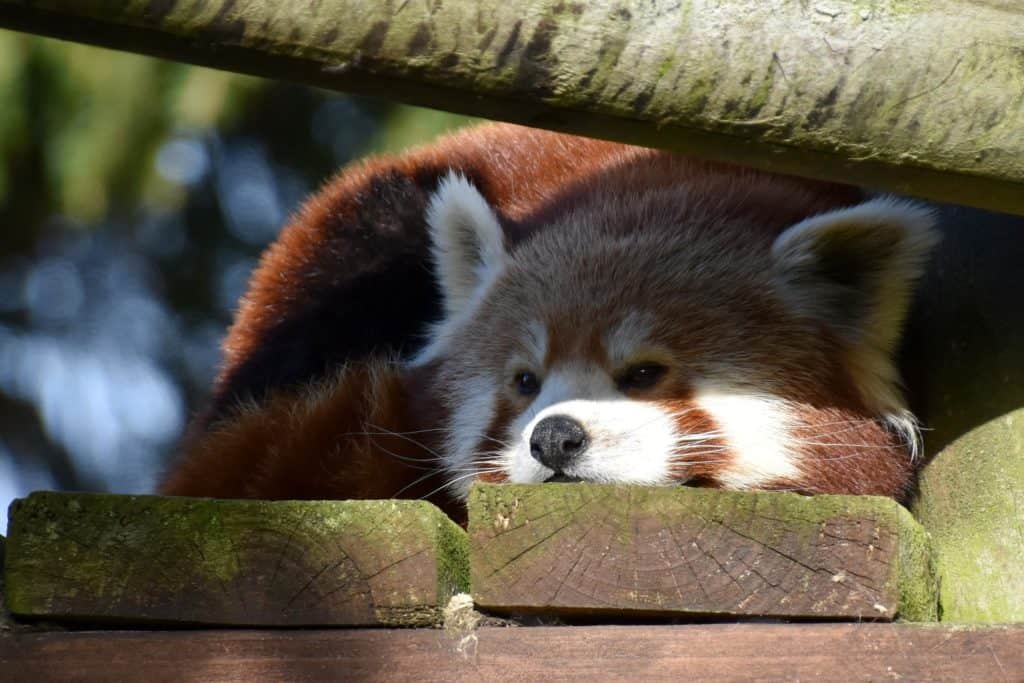
Red pandas were thought to be related to raccoons and raccoons were thought to be related to bears.
©Millie Bond – Copyright A-Z Animals
Scientists once believed that raccoons are related to bears. They are both carnivorous mammals that foraged and fished in a comparable manner. Both are predators that hunt similar foods with comparable diets. Additionally, both have adapted to living in similar environments and learned to forage for food while aiming to avoid direct human contact.
Later, it was discovered that raccoons are not related to bears at all, which negated the notion that raccoons and red pandas were related.
In 1825, red pandas were first described as raccoons, due to several similarities and social behaviors. Red pandas were cataloged as raccoons until further study disproved it and they were given their own genus.
Similar Facial Patterns

Red panda and raccoon facial markings are individualistic.
©Jose Angel Astor Rocha/Shutterstock.com
The closest similarity between red pandas and raccoons is their adorable facial patterns. These patterns are unique to every individual, meaning no raccoon or red panda has the same facial markings. Also, both of their masks are adapted to help them survive in the wild.
One theory states that raccoon masks help other raccoons identify individuals among a group or litter. Raccoon mothers give birth to a litter of two to five infant raccoons. Their facial markings are not prominent at birth but develop over time. These markings help the mother and siblings recognize each.
Additionally, the black lining around the raccoons’ eyes helps filter out excess light to help them see better at night. The darker fur on their faces reduces glare from oncoming lights, allowing them to be more effective hunters.
Red panda facial patterns help them blend into the canopy, while also filtering light away from their eyes when they sleep. As previously stated, red pandas live in high-altitude areas, where they have an increased chance of sunlight glaring in their eyes.
Furthermore, once the baby fur is replaced by mature fur, red panda mothers can identify their litter by the markings on their cub’s faces.
Bushy Tails
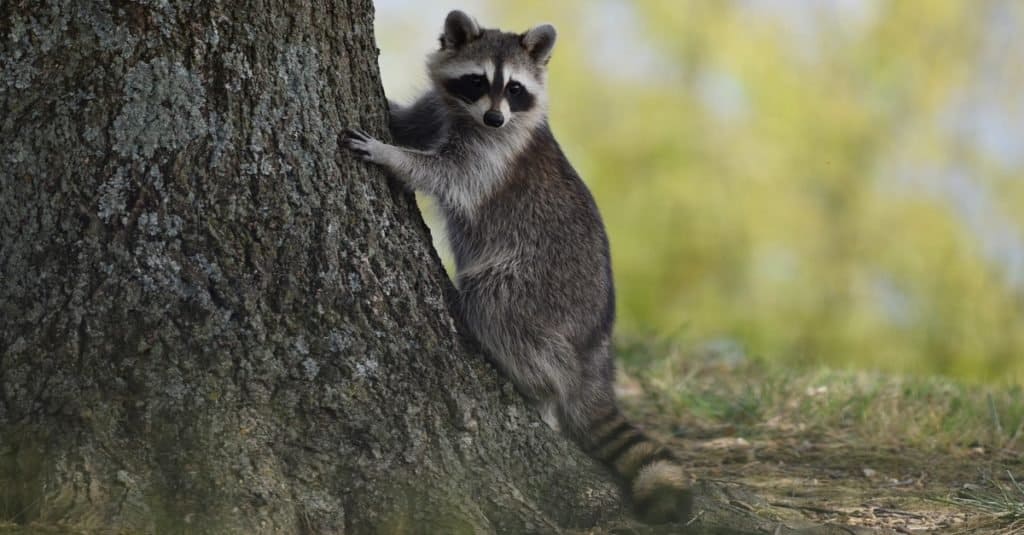
Raccoons and red pandas have long tails to help them balance while they climb across tree branches.
©Maryna Rayimova/Shutterstock.com
Red pandas and raccoons both have long, bushy tails decorated with rings. Both animals use their long tails to help them balance while resting in treetops. The tail rings provide camouflage, allowing them to blend into their surroundings better.
Also, red pandas use their bushy tails to cover their face while they sleep. Their thick tails provide excellent protection from sunlight, allowing them to comfortably nap without light glaring into their eyes.
Neither red pandas nor raccoons hibernate in the winter. Their tails offer additional warmth and comfort when winter arrives and the temperature drops.
Similar Size and Shape

Raccoons can weigh up to 36 or more pounds when well-fed.
©BS Thurner Hof / CC BY-SA 3.0 – License
Wild red pandas and raccoons are very similar in size and shape. A male red panda can weigh between eight and 14 pounds, while a female weighs 6.6-13 pounds. In contrast, a raccoon can weigh 12-36 pounds, depending on how much they consume.
Although raccoon faces have a pointier snout compared to those of red pandas, their long bodies, solitary natures, and cute appearances make them easily mistaken for red pandas.
Final Summary of Raccoon and Red Panda Heritage
Unfortunately, red pandas and raccoons are not related to each other in any way. While they look similar with their cute faces, long bushy tails, and treetop living lifestyle, the two mammals are distinctly their own creatures. However, it is an easy mistake to believe they are distant cousins. Scientists once believed these animals were related before further research proved them wrong. Scientists also believed raccoons were similar to bears until evidence proved otherwise.
Both red pandas and racoons are adorable animals that deserve our compassion and protection. Raccoons provide an important service to the environment, while red pandas are an endangered species, with fewer than 3,000 remaining in the wild.
By spreading awareness about these animals, we can keep them safe for future generations.
The photo featured at the top of this post is ©
Thank you for reading! Have some feedback for us? Contact the AZ Animals editorial team.



